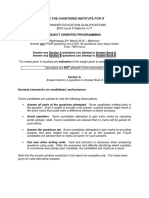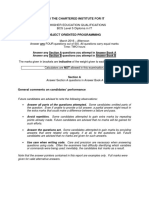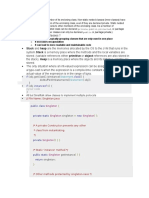0% found this document useful (0 votes)
90 views22 pagesSingleton Pattern
The Singleton design pattern ensures that only one instance of a class is created and provides a global access point to that instance. It involves a private constructor, a static method that returns the instance, and a static variable holding the instance. This pattern provides controlled access to shared resources like log files or device drivers and hides object creation, making dependencies harder to see and unit testing more difficult.
Uploaded by
Alina TeleatnicCopyright
© © All Rights Reserved
We take content rights seriously. If you suspect this is your content, claim it here.
Available Formats
Download as PPTX, PDF, TXT or read online on Scribd
0% found this document useful (0 votes)
90 views22 pagesSingleton Pattern
The Singleton design pattern ensures that only one instance of a class is created and provides a global access point to that instance. It involves a private constructor, a static method that returns the instance, and a static variable holding the instance. This pattern provides controlled access to shared resources like log files or device drivers and hides object creation, making dependencies harder to see and unit testing more difficult.
Uploaded by
Alina TeleatnicCopyright
© © All Rights Reserved
We take content rights seriously. If you suspect this is your content, claim it here.
Available Formats
Download as PPTX, PDF, TXT or read online on Scribd
/ 22
























































































